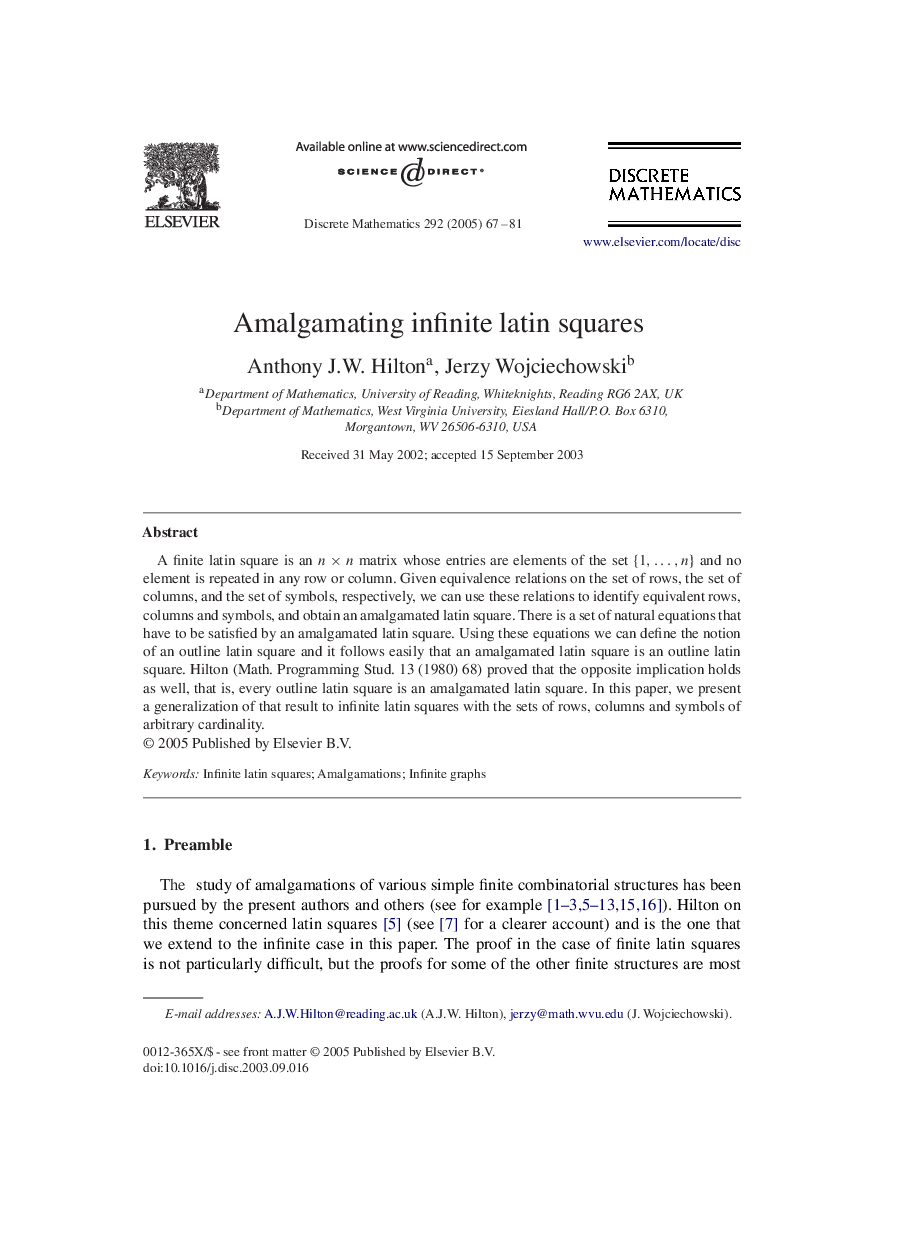| Article ID | Journal | Published Year | Pages | File Type |
|---|---|---|---|---|
| 9513549 | Discrete Mathematics | 2005 | 15 Pages |
Abstract
A finite latin square is an nÃn matrix whose entries are elements of the set {1,â¦,n} and no element is repeated in any row or column. Given equivalence relations on the set of rows, the set of columns, and the set of symbols, respectively, we can use these relations to identify equivalent rows, columns and symbols, and obtain an amalgamated latin square. There is a set of natural equations that have to be satisfied by an amalgamated latin square. Using these equations we can define the notion of an outline latin square and it follows easily that an amalgamated latin square is an outline latin square. Hilton (Math. Programming Stud. 13 (1980) 68) proved that the opposite implication holds as well, that is, every outline latin square is an amalgamated latin square. In this paper, we present a generalization of that result to infinite latin squares with the sets of rows, columns and symbols of arbitrary cardinality.
Keywords
Related Topics
Physical Sciences and Engineering
Mathematics
Discrete Mathematics and Combinatorics
Authors
Anthony J.W. Hilton, Jerzy Wojciechowski,
